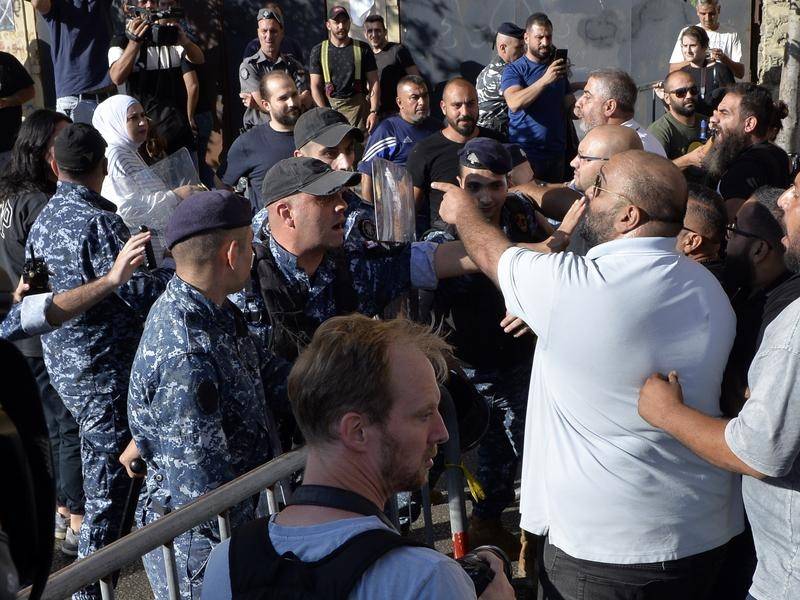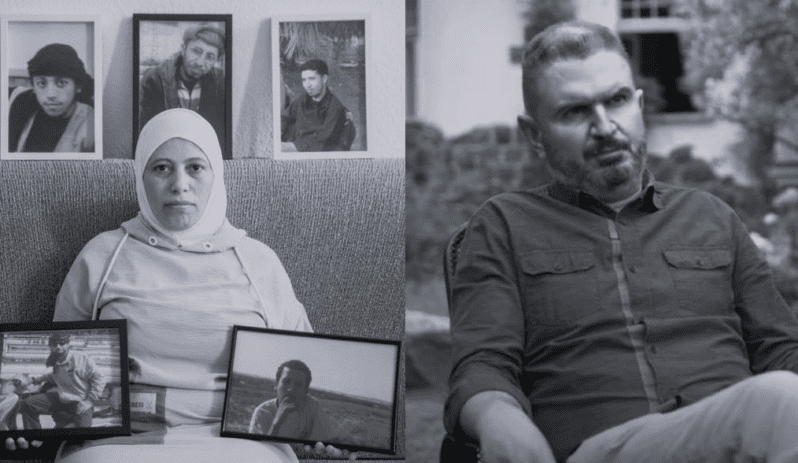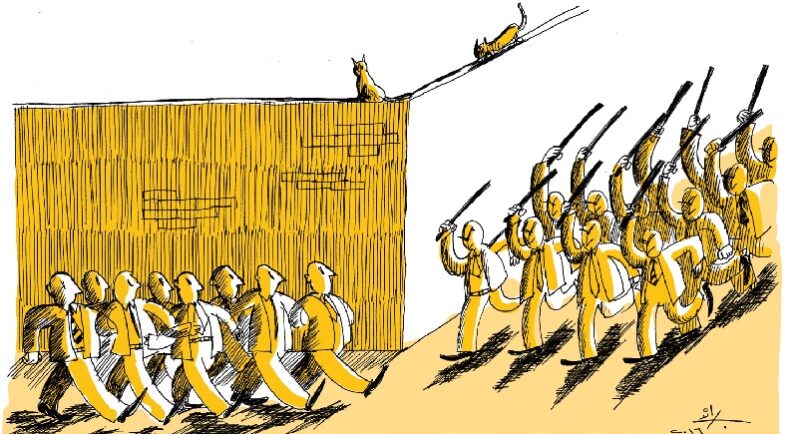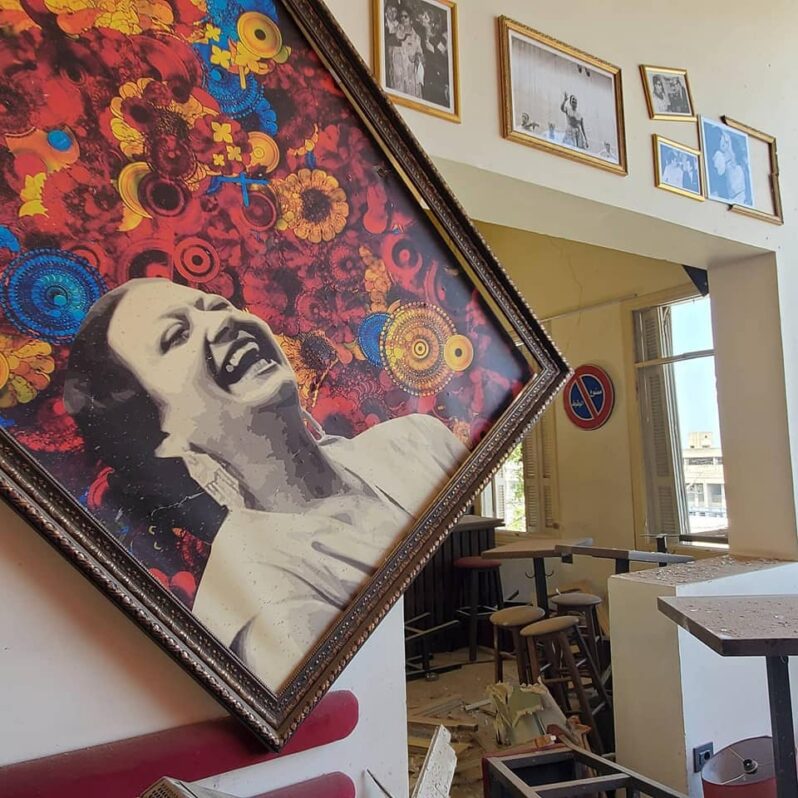The Syrian Regime’s Legal “Reforms” (I): The Ruse of the Right to Protest

Contrary to the aspirations of some of the Syrian regime’s closest connections, Syria was not exempt from the popular uprisings that ousted several despotic political regimes in the Arab world. Anti-regime demonstrations spread through Syria starting mid-March of 2011, chanting for freedom and for the restoration of the dignity of ordinary Syrians.
Since the onset of the crisis, observers concurred that the only way to ease political tension and avoid further complication of the crisis would come through radical legal and political reforms. It was indeed the only way to avoid the country’s downward spiral into violence, one that has already cost the lives of thousands of Syrians regardless of their political, ethnic or confessional backgrounds.
At the outbreak of demonstrations, the Syrian regime declared on several occasions its determination to undertake legal reforms in response to the demands of the people. Supporting ‘comprehensive reform’ became the motto of the day as an alternative to ousting the regime. To live up to this motto, the regime set out to amend its arsenal of repressive, freedom-restricting laws.
However, it soon became clear that the declared push for reform was merely a ruse to circumvent popular protests and demands. The regime’s intention was revealed when it decided to lift the country’s (decades-old) state of emergency and then refrained from implementing its decision. Following its declaration, state of emergency type of incidents, such as arbitrary detentions and torture, increased rather than decreased. Also, new laws aimed at reinforcing repressive measures were promulgated. Top among these laws was Legislative Decree No. 22 establishing a Counterterrorism Court.
In fact, a comprehensive review of the different decrees issued by the regime since the onset of public demonstrations early 2011, confirms the extent to which the regime’s claim of reform is a ruse. The review covers decrees on the security, judicial and constitutional levels, and in the context of public liberties and basic rights.
The findings point out the various gaps and flaws of these decrees. A negotiated political settlement or the establishment of a new regime by an alternative power that does not take these shortcomings into account, will not be able to push the Syrian wagon back on track, limit the humanitarian catastrophe ravaging the country, and build a democracy based on real legal reforms.
At the beginning of the Syrian crisis, the absence of legislation guaranteeing and regulating the right to peaceful demonstration became centre-stage. Popular demands had initially taken the form of protests and demonstrations. The regime found itself in an untenable position. Article 39 of the then-Syrian Constitution (it was replaced in 2012) stated that “citizens have the right to peaceful congregation and demonstration in accordance with the principles of the Constitution”, adding that “the law regulates the exercise of this right”.
Moreover, international conventions on human rights ratified by the Syrian government fostered this right to congregate and demonstrate peacefully by defining it as a fundamental human right. Article 21 of the International Covenant on Civil and Political Rights (ICCPR) stipulates that “the right of peaceful assembly shall be recognized”.
It was in the context of this legal framework that the Syrian government passed legislation on peaceful demonstration with the onset of events. In 2011, Legislative Decree No. 54 was issued clearly stating, in accordance with to Article 2, that it aimed at “regulating the right to peaceful demonstration, as one of the basic human rights guaranteed by the Syrian Constitution”. After long decades of negligent delay, the constitutional text on peaceful demonstration was translated into an actual law. However, the law’s provisions were disappointing and ominous of the potential deterioration of the Syrian situation into a bloody confrontation between the regime and its opponents outside any political or legal framework regulating the struggle.
Many clauses of Decree No. 54 were based on the Yemeni legislation regulating demonstrations and marches under (Yemeni) Presidential Decision No. 29 of 2003. However, the Yemeni legislation is much more progressive than that of the Syrian. The Yemeni text requires the submission of a “notice” to relevant authorities for a demonstration to take place. The term “notice” reflects the belief that demonstrating is a citizens’ basic right that does not require the approval of governmental authorities, but rather involves merely notifying them so that they take the appropriate security measures.
On the other hand, the Syrian text requires the submission of a “permit request”, and does not speak of “notice”, “notification” nor “declaration”. The Syrian legislation also provides for many procedural restrictions. For example, demonstration organizers have to provide a notarized document in which they pledge to take responsibility for all damages that may affect public or private funds and property.
This kind of requirement runs contrary to the main purpose of notifying or obtaining the approval of relevant authorities. Authorities are supposed to secure public and private property during demonstrations by dispatching police forces to the site. Such responsibility should not be laid on the shoulders of organizers who will never be able to protect their assembly from sabotagers or infiltrators intending to cause damage.
Yemeni legislation goes even further by providing explicitly in Article 8, for the duty of the relevant governmental entity to protect “public and private property and provide medical, humanitarian and other aid”. Syrian legislation, on the other hand, lacks any clause of the sort, and fails to define exactly the nature of the responsibility in question, whether civil or penal, or even individual or collective.
Under Syrian Legislative Decree No. 54, the Ministry of Interior is the only authority allowed to issue demonstration permits. In contrast, protest legislation of many other countries grants the right to issue a permit to authorities at a lower level such as governorates or even certain police departments. Furthermore, the decree imposes a long waiting period to receive the permit. The request should be submitted at least 5 days prior to the demonstration date and the response could take up to a week. During this week, the governorate which receives the request submits it to the Ministry of Interior. The latter will then respond in writing to the governorate, which in turn informs the applicant.
Issued by the Ministry of Interior on May 9, 2011, executive instructions (decision No. 410) relating to Decree No. 54, reinforced restrictions placed on protest organizers. As per the instructions, it is necessary to specify the objectives and reasons behind the demonstration as well as the demands and slogans that would be raised during the protest.
Moreover, Article 3 of said Decree states that demonstrations should be in accordance with the Syrian Constitution's principles and governing laws. Such stipulation annuls the purpose of the demonstration itself, given that the main source of tyranny in Syria resides in certain provisions of the Constitution and the freedom-restricting laws that are in effect. Peaceful protest is usually organized to demand the amendment of such provisions and laws.
In the absence of any comprehensive legal, constitutional and democratic reforms, Article 3 of the Decree thereby annuls the value of the legislation on peaceful demonstration. The Decree simply states that the rejection of the demonstration request by the Ministry should be reasoned. The executive instructions specify the acceptable reasons for rejecting a demonstration request.
These include the possibility that the protest leads to serious riots, vandalism, large disruption of the life of the community, or if the number of security forces in the area where the demonstration is taking place is insufficient. Such reasons are open to interpretation that they would serve any pretext to reject a demonstration request, especially under the current hegemony of the security apparatus. Besides, said reasons are at odds with the limitations of the right to demonstrate as stipulated in international conventions. Article 21 of the ICCPR states that no restrictions may be placed on the exercise of the right to peaceful assembly “other than those imposed in conformity with the law and which are necessary in a democratic society, in the interests of national security or public safety, public order, the protection of public health or morals, or the protection of the rights and freedoms of others”.
Several European laws abide by said stipulation, such as French Decree No. 1935 on peaceful demonstration. Article 3 of the French Decree restricts the rejection of a demonstration request to cases where general security is at risk. Such cases would require the existence of a real danger or a crucial problem posed by the demonstration in question, or an absence of the operative means to safeguard general security.
Another disadvantage of Syrian Decree No. 54 is the absence of defining what methods are permitted to disperse peaceful demonstrations. Many foreign laws provide explicit and detailed stipulations regarding police conduct in demonstrations, including the need for police to issue peaceful warnings before dispersing demonstrators. It must be noted that executive instructions pertaining to Decree No. 54 mention the necessity of advising demonstrators and warning them before dispersing them by force, while “respecting the gradual use of force”. Nevertheless, the mentioned gradual use of force was not defined. The law should explicitly impose the proportionate use of force, which includes limiting the use of live ammunition to situations of legitimate self-defense.
The Decree also states that if its provisions are contravened, Articles 335 to 339 of Syrian Penal Code No. 148 of 1949 will apply. Said articles provide for various offenses, some of which are totally unrelated to the act of demonstration. These include the assembly of three persons or more, at least one of which is armed, with the intention of committing a felony or misdemeanor.
Furthermore, the penalty for noncompliance with dispersion orders without use of force may apply to all participants in any crowd or procession whether peaceful or not. The penalty ranges from imprisonment of 1 month to 2 years (see Articles 336 and 338 of said Code). In contrast, respective foreign legislation is much more explicit and specific on who is subject to such punishment. For example, French legislation explicitly sets a penalty of 6-months imprisonment and a fine for organizers –not participants– of an undeclared demonstration.
In the same vein, Yemeni legislation elaborately states the penalties for violating its provisions rather than making reference to the penal code. Penalties outlined by Yemeni legislation are more proportionate to the infractions at hand. Article 10 of the relevant Yemeni law states that “whoever organizes or calls for a demonstration or march in contradiction with the provisions of this law shall be penalized with a maximum penalty of 2-months imprisonment and a fine not exceeding 50,000 Yemeni Riyals”. Protesters with no organizing role are penalized only if they resist police orders to disperse, and even then the penalty does not exceed a 15-day imprisonment or the aforementioned fine (see Article 11).
Despite the unfairness of the Syrian legislative penalties, Syrian President Bashar Assad issued a new legislative decree on September 6, 2011. Decree No. 110 amended Penal Code No. 148 of 1949, and reinforced the penalties related to rallies and demonstrations. Articles 335 and 336 were amended to increase the fine, now varying between 20,000 and 50,000 SYP. These amounts are considerably high, especially when compared to the fines set for violations of other Syrian laws.
It should be noted here that, unlike the majority of legislation on demonstrations, Decree No. 54 does not distinguish between a sit-in and a demonstration. Article 1 actually mixes the two concepts, which makes the penalties set in the Decree applicable to instances other than demonstrations. In comparison with the Yemeni legislation, the latter explicitly states in Article 19 that “the provisions of this law shall not apply to sit-ins and demand-conveying rallies unless these turn into demonstrations or marches”.
Remarkably, Syria’s Ministry of Interior has reportedly yet to approve a single request for peaceful demonstration submitted by the opposition. Activists have been confirming this since the beginning of the crisis. Artist Ali Ferzat published on his social media page a document apparently issued by the governor of Damascus, in which the latter rejects a permit request for peaceful demonstration on April 28, 2011.
One should also not forget that organizers of protests remain under the risk of arrest and vengeful procedures, given the hegemony of the security apparatuses and the immunity enjoyed by Syrian security officers. Such was the case of lawyer Fadel al-Faisal. According to a blog entry by lawyer Mustafa Osso, al-Faisal was interrogated by the Air Force Intelligence after submitting a request for holding a peaceful demonstration to the governor of al-Hassaka.
Meanwhile, and in clear violation of the principle of equality before the law, many pro-regime demonstrations were organized during 2011 and were safe from any assault. On the other hand, peaceful anti-regime demonstrations were confronted with excessive use of force and systematic shooting. Regime forces denied any responsibility and blamed armed groups for the attacks, completely ignoring the state’s responsibility to protect its citizens.
Hundreds of referrals to the judiciary were issued against large numbers of peaceful demonstrators on the basis of violating Decree No. 54. Participants in peaceful demonstrations were subjected to extra-legal collective arbitrary arrests, leading to enforced disappearances, systematic torture and killings. These systematic violations were taking place alongside a fierce media campaign by pro-regime national channels and websites describing the demonstrators as foreign-funded infiltrators and traitors. The same media outlets also broadcasted recordings of forced confessions in what constituted obvious incitement to hatred and inhuman repression.
In conclusion, one can reasonably argue that Legislative Decree No. 54 regulating peaceful demonstration cannot be considered part of Syria’s “legal reforms” package. In reality, the provisions of the Decree were aimed at limiting the right to peaceful demonstration, and strengthening the legal basis invoked by governmental authorities, to repress demonstrations and collect exorbitant fines in the process. The actual implications of the decree eroded any remaining trust between the government and the opposition and firmly severed any ties between them. It consequently laid the grounds for the irreversible transition towards the security solution stage of the conflict, which has caused so much devastation and continues to do so.
However, Decree No. 54 is not the only law which was billed as a means of reform and used for opposite ends. Systematic crimes against humanity have been committed under the recently issued despotic legislative decrees, especially Legislative Decree No. 22, establishing the Counterterrorism Court. The implications of the latter law will be the subject of the second installment of this series.
This is an edited translation from Arabic.



